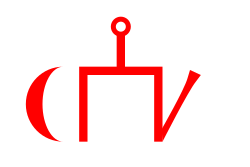Kazaňský chanát
| Kazaňský chanát Казан ханлыгы Qazan xanlığı قازان خانليغى
| |||||||
Geografie
| |||||||
| Obyvatelstvo | |||||||
| Státní útvar | |||||||
dědičná monarchie | |||||||
Vznik | 1438 – založení státu | ||||||
Zánik | 1552 – anektováno Moskevským carstvím | ||||||
| Státní útvary a území | |||||||
| |||||||
Kazaňský chanát (arabsky قازان خانليغى; rusky Казанское ханство, Kazanskoe chanstvo; tatarsky Казан ханлыгы, Qazan xanlığı) byl tatarský stát existující na území dřívějšího Volžského Bulharska, tedy současné Čuvašsko, Marijsko, Mordvinsko, Tatarstán a část Udmurtska a Baškortostánu. Hlavním městem byla Kazaň. Vznikl v době postupného rozpadu Zlaté hordy v roce 1438 a zanikl roku 1552, kdy byl dobyt prvním moskevským carem Ivanem IV. Již předtím však byl dlouhá léta politicky závislý na velikém knížectví moskevském, které využívalo labilní politické situace v chanátu a častého střídání chánů.
Historie
Předchůdci chanátu
Po rozpadu Onogurie v 8. století se pod vedením staršího Kubratovho syna Kutraga jedna skupina Hunobulharů přesunula po toku řeky Volhy na sever až na její soutok s Kamou, na území dnešního Tatarstánu a Baškortostánu. Zde společně s dalšími turkickými a ugrofinskými skupinami na přelomu 9. a 10. století vytvořila první feudální útvar v severovýchodní Evropě: Bulharskou volžsko-kamskou říši s hlavním městem Bulgar. Na začátku 13. století však tento kvetoucí stát byl dobyt a zničen vojsky chána Bátúa a stal se součástí Kypčackého chanátu – Ulusu Džuči (Zlaté hordy). Chán Berke (1209–1266), který přijal islám, osamostatnil Kypčacký chanát a založil jeho hlavní město Saraj Berke poblíž dnešního Volgogradu. Je známo tažení bratra Berkeho – Bátúa (1208–1255) přes Moravu do jižní Evropy v letech 1241–1242.
Kazaňský chanát

Kazaňský chanát se vyčlenil z Ulusu Džuči roku 1438, zakladatelem dynastie kazaňských chánů byl Ulug Muhammed (vládl 1438–1445). Tento chanát však nakonec vyvrátil Ivan IV. roku 1552, což znamenalo také vyhánění tatarského obyvatelstva a jeho obracení na pravoslavnou víru. V Moskvě byl na počest tohoto vítězství postaven chrám Vasila Blaženého (1555–1560), jehož komplex osmi kostelů symbolizuje osm dní obléhání Kazaně. V současné době je Tatarstán republikou v Ruské federaci s prezidentem jakožto hlavou státu. K přehlížení anebo spíše nedocenění kulturního přínosu Volžských Hunobulharů a Tatarů napomohlo jistě i to, že od dob Bulharské volžsko-kamské říše byli obyvatelé tohoto území muslimové.
Reference
V tomto článku byl použit překlad textu z článku Khanate of Kazan na anglické Wikipedii.
Související články
- Rusko-kazaňské války
- Ruské carství
- Kazaň
- Zlatá horda
Externí odkazy
 Obrázky, zvuky či videa k tématu Kazaňský chanát na Wikimedia Commons
Obrázky, zvuky či videa k tématu Kazaňský chanát na Wikimedia Commons
Média použitá na této stránce
Autor: Лобачев Владимир, Licence: CC BY-SA 3.0
In the Illustrated Chronicle of Ivan the Terrible, there is an image of the banner of Ivan the Terrible in the Kazan campaign — a bifurcated white one with the image of the Savior and an eight-pointed cross above it. According to other sources, the banner was red instead of white. A copy of this banner, which has been restored many times, is still kept in the Kremlin Armoury.
Autor: HetmanTheResearcher, Licence: CC BY 4.0
The rulers of Kazan used varying colours banners when going into battle, of which banners with Mongol blue were the most common.
Autor: Vorziblix, Licence: CC0
The flag of the Golden Horde, as shown in Angelino Dulcert's 1339 map. A similar flag appears in the later Catalan Atlas (1375), providing corroboration.
See also Early Mongol Flags at crwflags.com:
- One of the charges is a crescent and the other looks like a simplified form of the tamga from the flag of Idel Ural. On different copies of the flag, the crescent has different size; it is often smaller than shown here, sometimes even reduced into a simple oblique stroke and conjoined with the other charge into a si[n]gle symmetrical object; the other charge also sometimes lacks the oblique part [2, 3]. It was obviously difficult to draw the charges always the same way. The cities with this flag which are easy to identify are [2, 7, 8]: Sarai, the capital (spelled Sarra) - there is also a depiction of the ruler, "Jani Beg Lord of Sarai" ("Jambech senyor de Sarra"); Tana, present-day Azov, Russia; and Urgench, Uzbekistan (spelled Organci, with a cedilla under the c; nowadays ruined). This flag is a variant of the flag of "Emperor of Sarai" ("Emperador de Sara") from "Libro del conoscimiento de los reinos" [7] and might be the one that had really existed, considering the similarity of its charges with those from the flag of Idel Ural.
- [2] Enciclopedia universal ilustrada, vol. XXI, Espan~a Madrid: Espasa-Calpe S.A., 1968
- [3] Istorija otkric'a i istraz<ivanja, vol. I: Poc<etak istraz<ivanja; Mladinska knjiga, Ljubljana, 1979; Original title: A History of Discovery and Exploration, vol. I: The Search Begins;(C) 1973 Aldus Books Limited, London
- [7] Libro del Conoscimiento. Viajes medievales, vol. I Madrid: Fundacio'n Jose' Antonio de Castro, 2005 ISBN 84-96452-11-5 (complete edition) ISBN 84-96452-12-3 (vol. I) [e9s50]
- [8] A[p]pendices. (Ibid.)
- Tomislav Todorovic, 21 April 2007
Autor: HetmanTheResearcher, Licence: CC BY 4.0
Territories controlled by Kazan at the end of the 16th-middle of the 17th century. Map has neighboring states, cities, rivers and a scale.
Most rivers and the coastline were made with Natural Earth. For the map details and some rivers in Kazan, used
Pelenskyj, J. Z. (1974). Russia and Kazan: Conquest and Imperial Ideology (1438-1560s) (Reprint 2017 edition., Vol. 5). De Gruyter, Inc. https://doi.org/10.1515/9783111529899. P.6.





